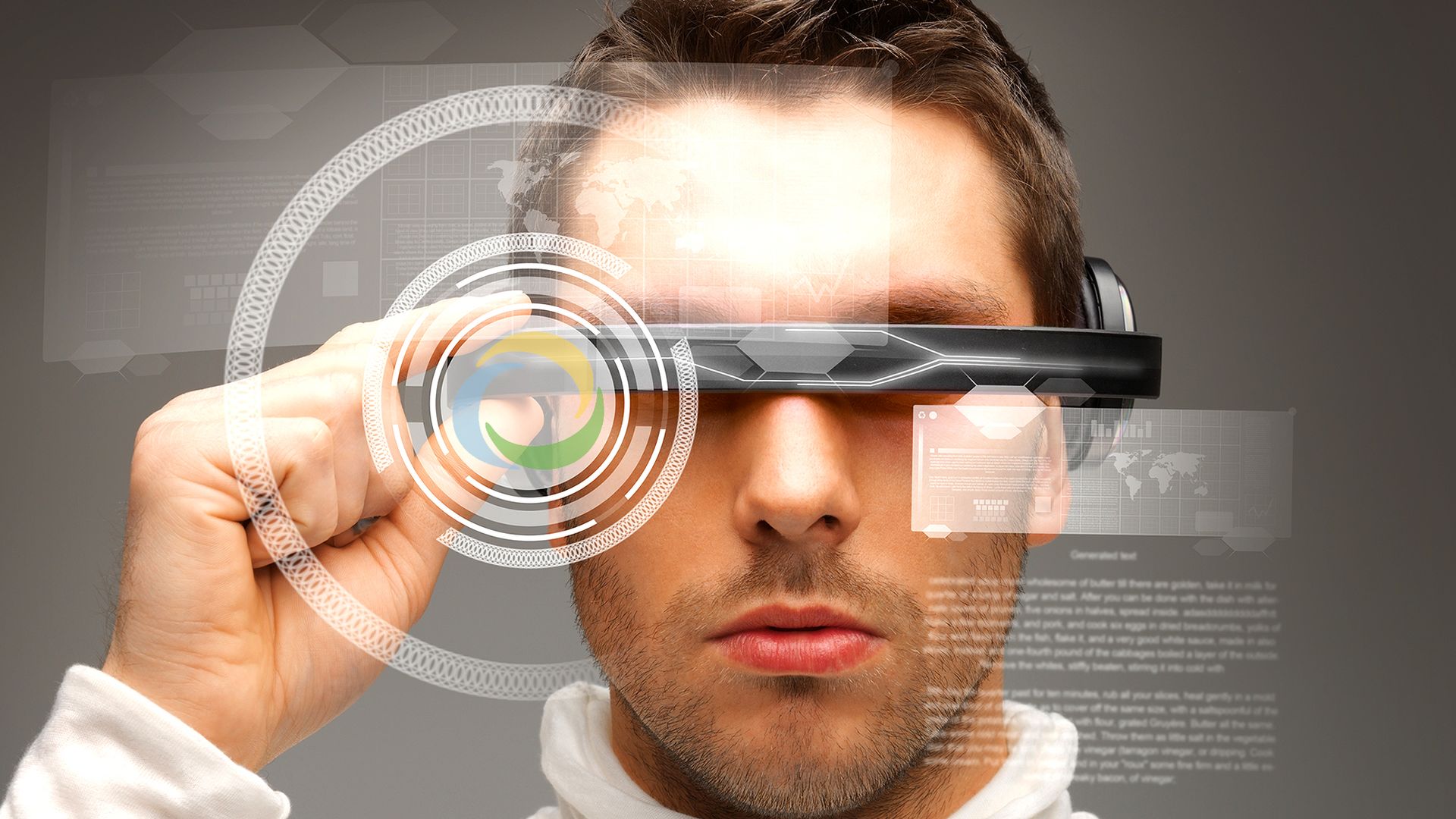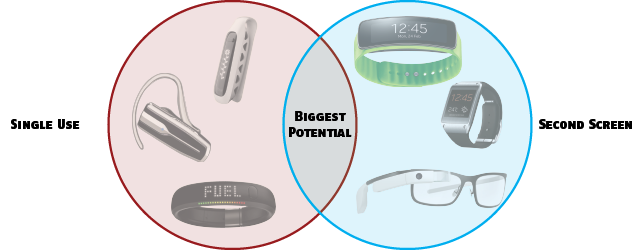Security Testing
Tomaso Vasella

Computers keep shrinking. They become faster and more powerful. The most recent trend: Wearables: Portable, small computers in the shape of glasses, wrist watches and sensor technology in clothing. Their development is just beginning. Time to have a look at this new tech.
The smartphone in your pocket is probably outdated. The devices of the future are called Google Glass – a pair of glasses that displays a wide array of data right in front of the wearer’s eye – or Smart Watch – wrist mounted devices that display data. Thus, text messages, e-mails and other features that users only know from a PC, a laptop or a mobile phone are being detached from their original devices and are modified to suit the human body.
Society hasn’t quite managed to reach the future yet. The fully functional heads-up-display in front of a wearer’s eye or the watch that performs all the operations of a laptop is still something right out of science fiction. Because up until now, Wearables are still gadgets. Nobody doubts, however, that the future of computers is moulded to the human body.
Wearables that are available today are, more often than not, far from independent devices. Usually, they’re an extension to the mobile phone. This means that a text message is received by the phone and only displayed on the smart watch. Or the route to your destination is being calculated on the phone and displayed on Google Glass.
This is why the definition of what makes a wearable is a difficult one. Interaction-Design.org defines Wearables as miniature electronic devices that are worn by the bearer under, with or on top of clothing. Then there are the know-it-alls who claim that an analogue watch is also a wearable because it is able to calculate the time independently. Mathematician Edward O. Thorp believes that it was him and his colleague who invented the first wearable computer in 1961: A device the size of a packet of cigarettes that was supposed to help them cheat at roulette. Then there are those who think that the Seiko 06LC, the first mass-produced digital watch, was the first wearable computer.
Most recently, other Wearables are on the minds of users and industry. They run on operating systems like Android or the Samsung-built Tizen. They measure our pulse, show us our way, analyse our coordinates and our blood pressure. They’re high-tech devices that are working in unison with other technology and they’re supposed to help us, to improve ourselves in terms of sport, organisation or information. But all this can only happen in combination with a smart phone.
As difficult as it is to define the term wearable it’s even more difficult to classify and categorize the devices.
| Category | Definition | Examples |
|---|---|---|
| Smart Textile / E-Textile | Clothing with integrated sensor technology | OmSignal Shirt SimpleSkin Wearable MRI |
| Tracker | Clips or wristbands that record the users’ activity. Occasionally, they include the recording of biometric data | Samsung Gear Fit Fitbit Nike+ FuelBand Jawbone Up |
| Usability Devices | Devices that seek to aid users in their everyday lives | Bose Bluetooth Headset Series 2 Google Glass |
Because technology is subject to constant evolution, this table is not a complete one. It’s an aid to get into the world of Wearables. Because it is the technological evolution that will influence this table. It is highly likely that there will be categories added to this and others might be obsolete at some point. And new inventions could find their way into the third line.
Even today, the sorting into these three categories is difficult. Google Glass can be considered a Usability Device as well as a Tracker. Or Samsung’s Gear Fit falls into the categories of Usability, seeing as there’s a built-in watch and the ability to display messages as well as missed calls, or as Tracker because it has an integrated GPS feature. Therefore, the table has focused on the device’s main function. Gear Fit aims to record movement and Google Glass helps out in the users’ everyday lives.
Brian Moore, senior designer at Cubicle Ninjas, chose a different direction and grouped Wearables into two classes, based on the extent of their functionalities. His proposed classification is best displayed in a Venn diagram.

His main criterion is the technology and its functionality. Do Wearables such as the Nike FuelBand, the Fitbit or a Bluetooth Headset only have one use? Or do the devices like Google Glass, Samsung Gear or Samsung Gear Fit serve to expand the functionality of another device, the smartphone for example?
Today, Wearables are still young. Neither technology nor application nor object have completely matured. Still, enthusiasts, developers and industry predict there being a big future for the small body mounted computers.
The lack of classification or categorization can lead to developers thinking outside of set paths, because those simply don’t exist. Currently, developers are enjoying a lot of liberty in this new area of app development, which will lead to leaps and bounds in development. Undoubtedly, there will be a categorization of apps sooner or later, which hopefully won’t hinder creativity.
Our experts will get in contact with you!

Tomaso Vasella

Eric Maurer

Marius Elmiger

Eric Maurer
Our experts will get in contact with you!